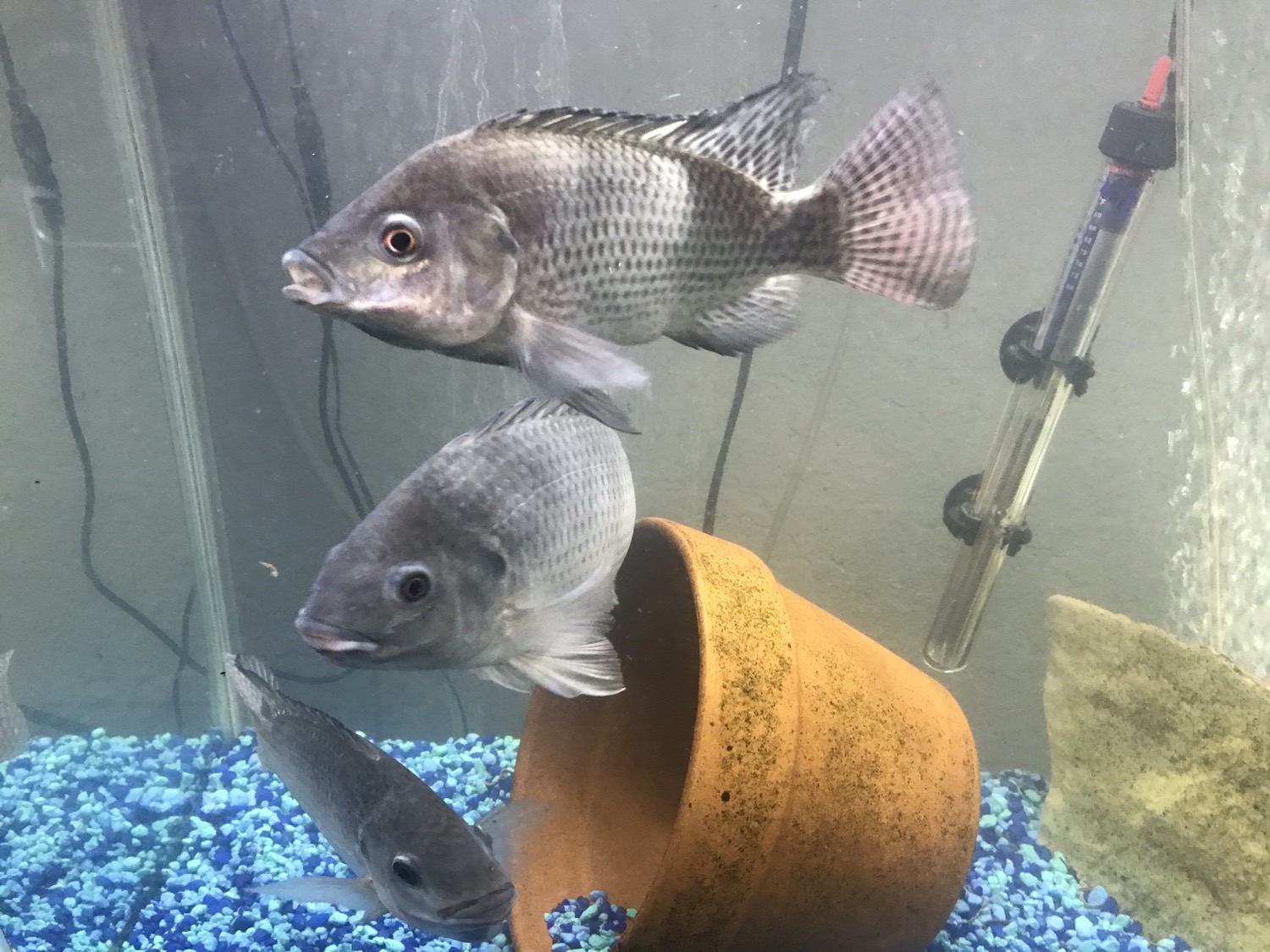Why Blue Tilapia and White Nile Tilapia are the Optimal Choice for Aquaponics: A Closer Look at Cold Hardiness and Fast Growth Rates
- Michael Belcher

- Dec 8, 2024
- 4 min read
Aquaponics combines fish farming with plant cultivation, creating an innovative and sustainable method of food production. Among the many fish options available, blue tilapia (Oreochromis aureus) and white Nile tilapia (Oreochromis niloticus) are often highlighted for their remarkable qualities that favor aquaponic systems. This post explores the reasons these tilapia species are ideal choices, particularly focusing on their cold hardiness and fast growth rates.
Understanding Aquaponics
Aquaponics is built on the natural interaction between fish and plants. Fish produce waste that serves as nutrients for the plants, while plants improve the water quality for the fish. This closed-loop system not only reduces water usage by up to 90% compared to traditional agriculture, but it also cuts down on fertilizers and chemical inputs, making it an effective means of sustainable food production.
With home gardening gaining traction, aquaponics is emerging as a practical solution for growing food sustainably and ethically. The success of an aquaponics system largely rests on choosing the right fish species.
Cold Hardiness of Blue and White Nile Tilapia
One of the standout features of blue tilapia and white Nile tilapia is their cold hardiness. Although they thrive in warmer waters, these species can tolerate cooler temperatures better than many other fish.
Blue Tilapia's Cold Tolerance
Blue tilapia can survive in temperatures as low as 47°F (10°C) for brief periods. This ability enables them to adapt to various climates, making them suitable for aquaponics enthusiasts in regions with seasonal temperature changes. For example, growers in areas with winter temperatures may find blue tilapia a resilient option, allowing them to maintain fish stocks year-round.
In one study, growers reported that blue tilapia could maintain growth rates even when water temperatures fluctuated to around 58°F (14°C) during winter months.
White Nile Tilapia’s Resilience
White Nile tilapia can withstand cooler temperatures down to 49°F (14°C). This unique cold tolerance lets growers operate aquaponics systems in locations with cooler climates, therefore expanding the regions where aquaponics can be successfully implemented.
By reducing the need for heating systems, these tilapia species help lower overall operational costs. For instance, aquaponics operators have reported up to a 30% savings on energy costs by cultivating these resilient tilapia species instead of warmer-water fish.
Fast Growth Rates of Blue and White Nile Tilapia
In addition to their cold hardiness, blue and white Nile tilapia are known for their rapid growth rates, making them attractive for aquaponics. These species can reach market size swiftly, allowing growers to achieve quicker returns on their investments.
Growth Rate Characteristics of Blue Tilapia
Blue tilapia is celebrated for its fast growth. It typically reaches an average weight of 1 pound (approximately 0.45 kg) in just 6 to 9 months. Under ideal conditions, some can grow to 2 pounds (approximately 0.9 kg) in less than a year.
This rapid growth not only boosts the quantity of fish produced but also means they can effectively recycle nutrients in the aquaponics system sooner. Their efficient feed conversion ratio of 1.5:1 means that for every pound of feed, they can gain approximately two-thirds of a pound in weight, optimizing the investment in feed costs.
White Nile Tilapia’s Growth Efficiency
White Nile tilapia showcases commendable growth rates as well. Typically, they reach sizes of around 1 pound in 8 to 12 months, influenced by their environment and feeding practices.
Although their growth may be slightly slower compared to blue tilapia, they excel in various conditions. For instance, in suboptimal environments where traditional species struggle, white Nile tilapia may still achieve a growth rate that is up to 10% faster than other common aquaculture fish, ensuring a robust yield even in challenging circumstances.
Economic Considerations of Tilapia in Aquaponics
Investing in blue or white Nile tilapia can lead to significant economic gains for aquaponics systems. Their rapid growth and high market demand create a favorable investment environment.
Market Demand
Both species are popular in the culinary world, with tilapia recognized for its versatile flavor, often compared to chicken. In recent years, tilapia consumption has surged, with the U.S. seeing a rise of over 20% in tilapia purchases from 2019 to 2022. This growing demand affords aquaponics growers significant opportunities for profit.
By cultivating blue and white Nile tilapia, producers tap into a lucrative market that emphasizes sustainability and health-conscious eating.
Low Maintenance Costs
The hardiness and efficiency of blue and white Nile tilapia translate into lower maintenance costs. Fewer health issues associated with temperature stress mean there is less need for medications or interventions. This allows growers to concentrate on maximizing their system for production.
For instance, aquaponics systems utilizing these tilapia have reported a 25% reduction in the costs associated with fish health management, allowing more focus on plant yield and quality.
The Path to Sustainable Food Production
In summary, blue tilapia and white Nile tilapia emerge as top choices for aquaponics due to their cold hardiness and fast growth. Their adaptability to cooler temperatures expands the potential for cultivation in diverse climates.
Furthermore, their ability to grow quickly meets the increasing demand for sustainable seafood. By selecting these fish species, aquaponics enthusiasts enhance productivity and profitability. Choosing blue and white Nile tilapia is more than just a strategic decision; it is a crucial step towards ensuring a sustainable future in food production.

